Finishing Figured, Spalted Maple
A discussion of how to enhance the grain and figure of spalted maple. November 13, 2005
Question
I sawed some red maple this spring and I searched the archives about making curly maple pop. I picked out the worst board in the bunch and am doing some experimenting with it, but I am not really getting anywhere. This piece doesn't have the figure or spalt of the rest, but it is still looking flat.
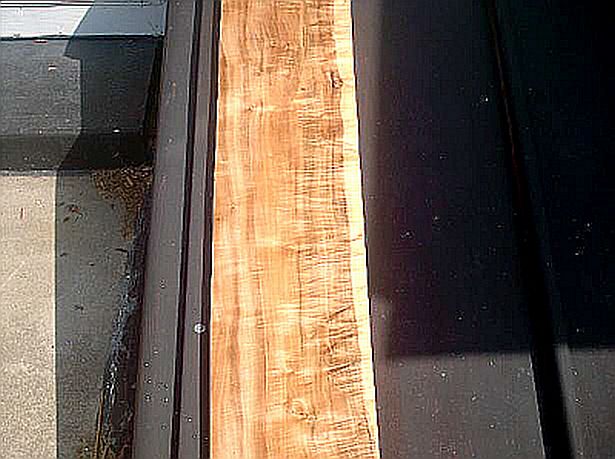
Click here for full size image
From the original questioner:
Here is the same board, flipped over.
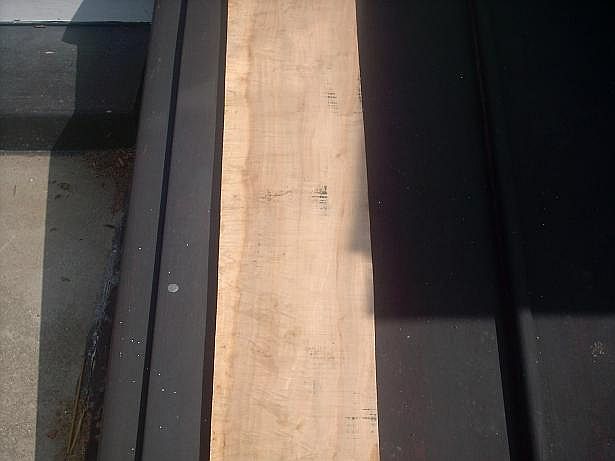
Click here for full size image
From the original questioner:
This is fresh off my bandmill. I sawed all I could into books. I don't know how to make the figure stand out and still highlight the spalt.
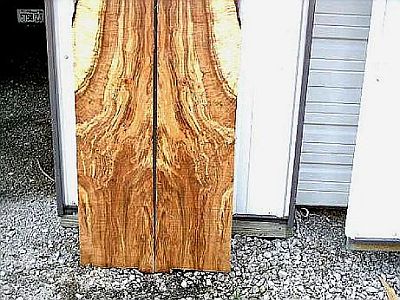
From the original questioner:
This is the last picture. This is about the average set. Any advice would be helpful.
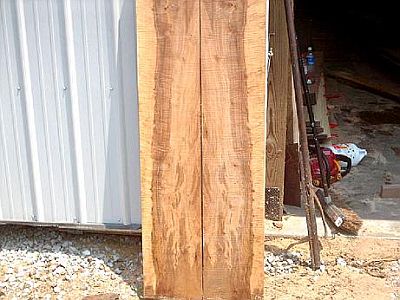
Forum Responses
(Finishing Forum)
From contributor A:
Try using a waterbased aniline dye on the raw wood, then top coating with lacquer. I've had success doing that on bird's eye maple in the past. Once the lacquer goes on, the grain really comes out. Of course, you'll want to raise the grain prior to dying the wood. There is also a very good article by Jeff Jewitt in the FWW archives called "Pop the Curl in Curly Maple" (April 1999). I'm giving the recipe a whirl on some curly maple now but I just started, so I can't say how it turns out yet.
From contributor B:
How many slices per board can you get? It would be nice to yield as much of that fine grain as possible. As far as popping the grain, I like contributor A’s idea about using a waterbased dye. Can you experiment on a few end pieces to see what you’re going to get? If you can, try sanding the wood to finish ready. Next, spread some clear
Watco oil over the board. Get some 400 or 600 wet-dry sandpaper (the black stuff) and start sanding with the grain. This will do two things - first it will give you a surface so smooth that a fly couldn’t land on it, and second - the grain will jump out at you and reveal all the various colors that the wood has to offer. After a two or three day drying time, you can topcoat your project with a lacquer or varnish or a hand applied wax finish.
From the original questioner:
I sawed the top half of the log, wasting a lot around the huge branch, and got 300 bd ft of books. I still have the butt log to saw which is 500 bd ft or so. I am letting it spalt more, as it had already started when I found it. I sawed most of it 4/4, some 5/4 and a little 8/4. I think I will saw a little thin stock from the butt, as I believe it may be prettier wood. My bandmill can cut on 1/10" scale, and I didn't have any problem drying so I am not afraid of cutting a little pile thin and have it around if I find a use for it.
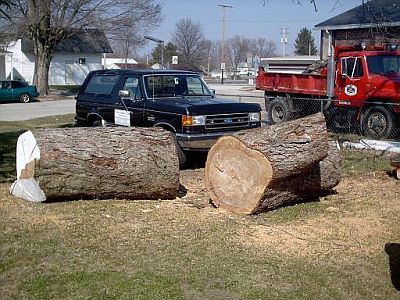
To contributor A: I am going to get some aniline dye and give it a whirl. After I read your post I did some checking and that does sound like it would be what I am looking for. I am thinking really thinned cherry. The pictures don't show it but there is a good deal of red, orange, and a little yellow in the stock.
From contributor C:
A clear danish oil wiped on will give you a lot of depth and pop the figure. I don't think I would stain wood with that figure unless I had to. When I am doing a lacquer finish I sometimes use SW clear stain base concentrate like a danish oil and then clearcoat.Using dye on curly figure works if you use a darker color first and then sand the stain off the harder grain leaving the color in the softer curl, thus enhancing it. The problem I see with your lumber is the sap wood which won't be as contrasting as it is now. I like the sap wood contrast in spalted lumber. If you don't, then stain would be an option.